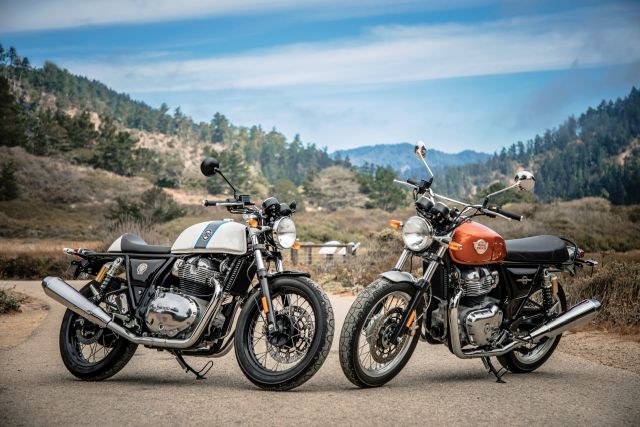
The first ride on Royal Enfield’s two 650 twins, the Interceptor and Continental GT, in the US marked the end of a long wait as well as the beginning of a new and glorious chapter in the marque’s long history
Story: Aspi Bhathena
Photography: Royal Enfield
The long wait is finally over. The two 650 twins from Royal Enfield are here and I got an opportunity to swing my leg over both of them. On paper, the 650 twin configuration is just about right to give you enough performance without being too big and cumbersome. The big point of discussion was: yes, on paper the 650 twins looked great, but would Royal Enfield be able to deliver the product?
For me, it was going back 40 years to my very first motorcycle, a 650-cc twin-cylinder Triumph Bonneville with similar performance figures as the Royal Enfield 650 twins. A lot of people will say why only 47 PS from a 650-cc engine in this day and age? There is no end to how much power one wants, but whether it is adequate and how it delivers the power and torque is what matters.
The Royal Enfield 700 and 750 Interceptor models were sold in the US during the 1960s and now the 650s are making a comeback in that country. The styling of the Interceptor is very traditional with a round headlamp with twin-pod meters at the front and a short mudguard. The seat is nice and flat, so that the pillion rider is not perched on the second floor with the rider on the ground floor. The round petrol tank with old-school triangular side-panel with the upswept megaphone exhaust and 18-inch spoked aluminium wheel rims complete the retro look.
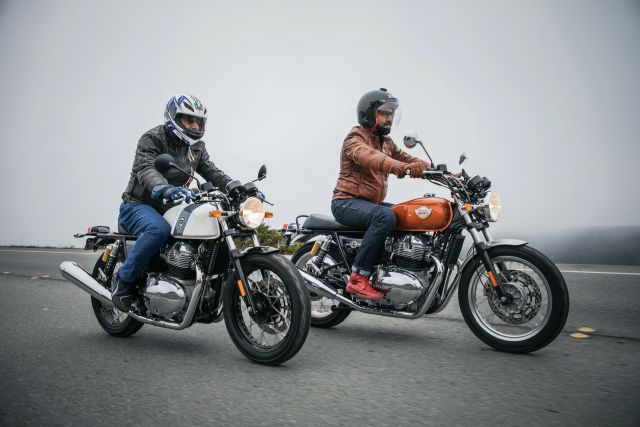
The bits that look modern are the hard-chromed 41-mm Gabriel front forks with 320-mm Bybre disc brake with ABS at the front and the piggyback gas-charged Gabriel shock-absorbers at the rear with 240-mm Bybre disc brake with ABS. The twin-pod speedo and RPM meter are electronic with analogue display. The quality and feel of the switchgear are very good and the ergonomics are also very good; one does not have to struggle to operate the switches. The only change I would like is to raise the twin-pod meters and the headlamp.
The exterior engine design is very important in a naked motorcycle and the air-cooled parallel twin looks just the part with the oval clutch cover on the right and the V-shaped alternator cover on the left.
The chassis is all-new and not carried forward from the Conti GT. The set-up is a cradle chassis where the downtubes are bolted on for easy removal and refitting of the engine.
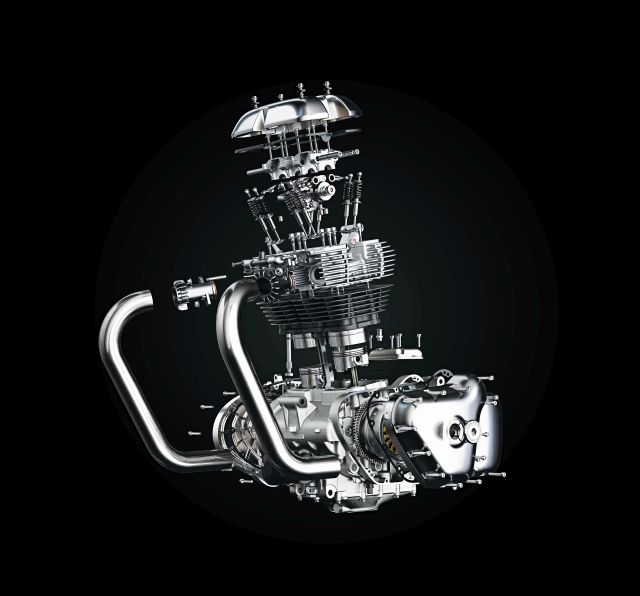
For the engine configuration, Royal Enfield tried the 360-, 180-, and 270-degree firing order before settling for the 270 crank. The 360-degree crankshaft firing order belongs to the old school and gives out quite a bit of vibration, the 180 is a shade better compared to the 360, but the 270 gives out the right vibes; in fact, the power pulse is more like a V-twin motor. The four-valves-per-cylinder SOHC engine is in a soft state of tune with very mild camshaft and a low compression ratio of 9.5:1. This relaxed motor produces 47.6 PS at 7,250 rpm and 52 Nm at 5,250 rpm. The engine is mated to a six-speed gearbox via a wet multi-plate clutch.
The difference between the Interceptor and the Continental GT is in styling since the engine, chassis, and suspension are the same, except for the top yoke. Whereas on the Interceptor the one-piece steel handlebar is mounted on the top yoke, the Continental GT comes with swan-neck clip-on handlebars. The original Continental GT was a 250-cc single-cylinder motorcycle in the 1960s. The petrol tank is shorter than that on the 535-cc Conti and the clip-ons are slightly higher than those on its predecessor. The foot-rests are higher and rear-set as compared to those on the Interceptor. The riding position is more upright compared to the old Conti GT. The black-painted aluminium rims don’t look good; I wish they were polished in their natural silver colour.
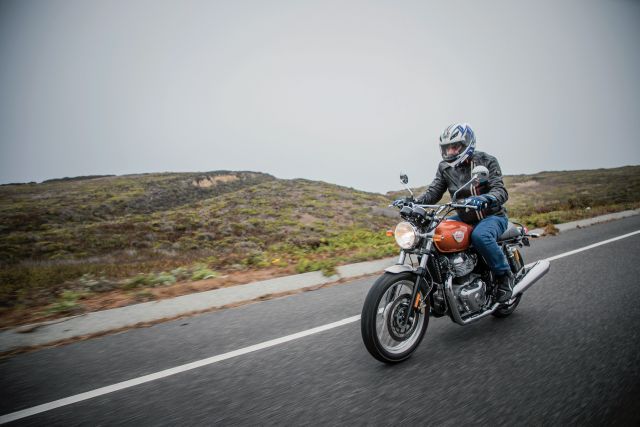
The minute I swung my leg over the Interceptor, I realized how small and compact the bike was. Thank god they have not made the bike tall and long to make it feel like a big bike unnecessarily.
Here I am in Santa Cruz, California, to ride the new Royal Enfield 650s in the Redwood Forest between Santa Cruz and Palo Alto, home to the Stanford University. A gentle push on the starter button brings the bike to life and you realize instantly that this motorcycle does not feel and sound like any of the old Royal Enfield motorcycles. Pull in the light clutch and a tap on the gear-lever selects first gear without that clank we are used to in the modern bikes. The clutch action is light and progressive.
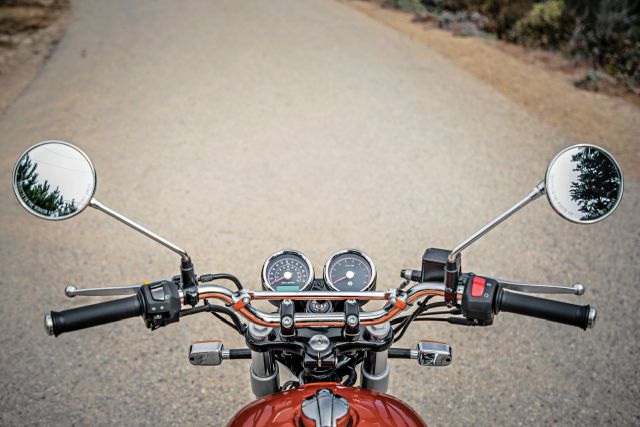
The route for the ride comprised 130 miles (208 kilometres) of some fast corners and tight corners and the last part was along the Pacific Ocean on the Pacific Coast Highway — an ideal place to test the handling and performance attributes of any motorcycle.
The lead rider for our group was Steve Randall, the official Royal Enfield test rider in the United Kingdom. The easy-to-ride and nimble handling of the bike was evident while riding through town. The fuelling is spot on, the power delivery is nice and linear, and there are no spikes in it, too. The gear-shifts are as slick as one may expect; in fact, I did not even use the clutch to shift up or down once on the move.
The moment we entered the Redwood Forest, Steve started going for it around corners and that’s when the Interceptor came into her own. We were scraping the foot-pegs with ease. There was a long sweeping right-hander with a dip in the road and the Inter took it in its stride without the slightest deviation or going off the line.
The 650 motor delivers excellent performance without having to rev its brains out and there is plenty of torque right from 2,500 rpm upwards.
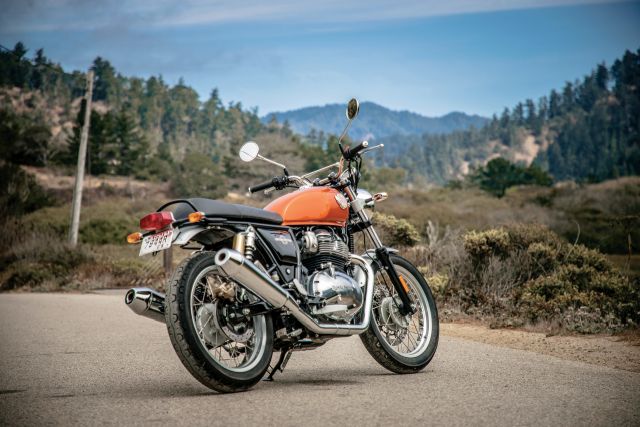


Leave a Reply